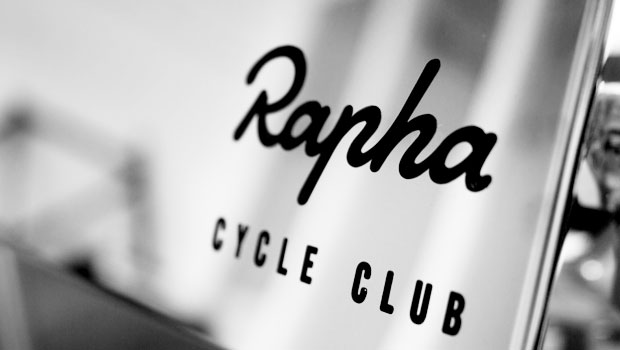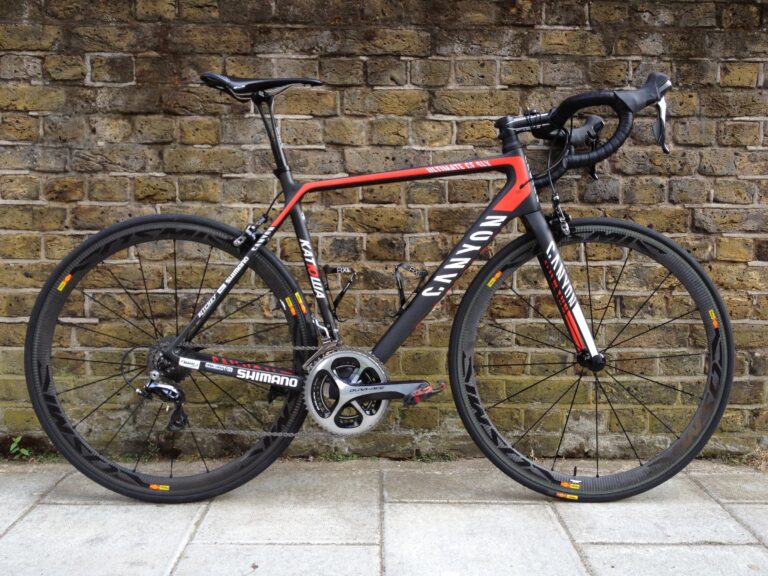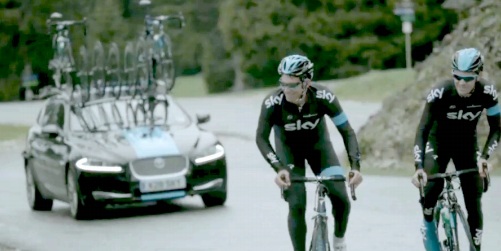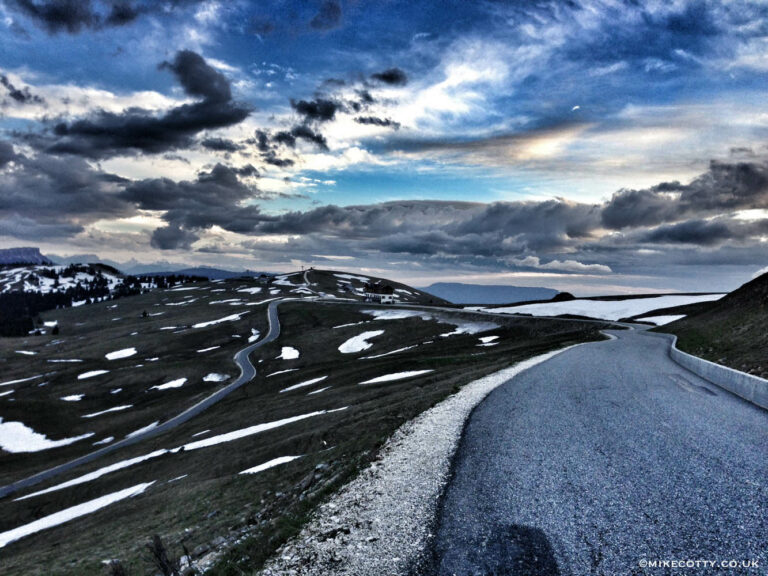“It never gets easier, you just go faster” – Greg Lemond.
The Etape du Tour has earned its place as one of the most popular – and toughest – sportives on the calendar by giving regular cyclists like you and me the chance to pit ourselves against a stage of the Tour de France and endure a small slice of the pain and suffering inflicted by cycling’s greatest race – even if it’s at a far slower pace.
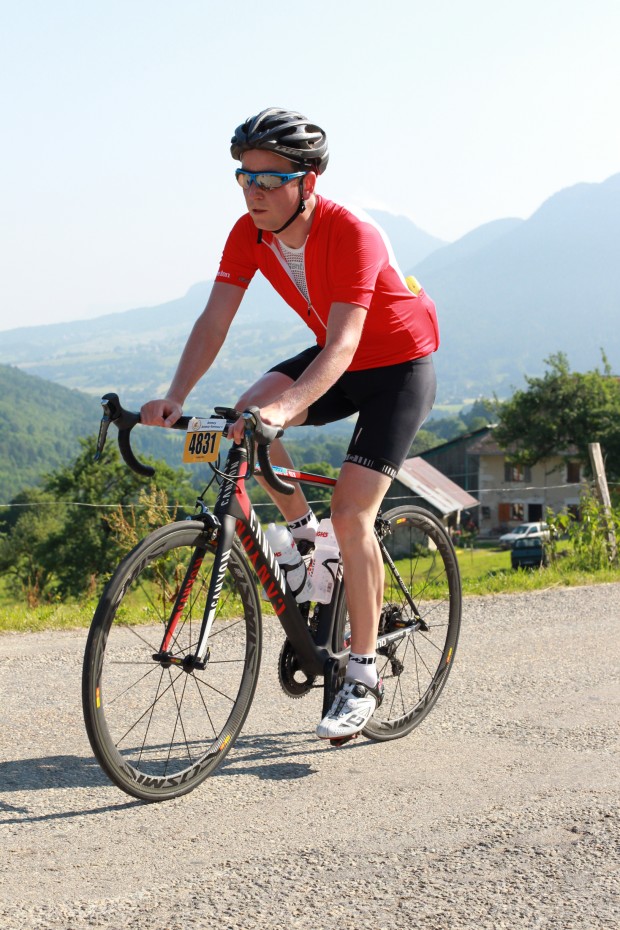
That’s the conflict of the Tour and, with it, the Etape: the pain and suffering, the beauty and mystique.
The 2013 edition of the Etape du Tour took place on Sunday over stage 20 of the Tour de France: a 128km circuit of the Bauges Mountains, starting in Annecy and finishing high above the town via six categorised climbs.
The final climb, an 11km ascent conducted at an average of 8.5 per cent, to the ski station of Annecy-Semnoz is designed to provide a last-gap launch pad for any rider with designs on winning the Tour when the race rolls through on Saturday July 20. A final battleground for the men of the Tour, perhaps, but last Sunday it resembled a war zone.
I arrived in Annecy two days earlier with Sports Tours International and, having rebuilt the Katusha-liveried Canyon Ultimate CF SLX (with Mavic’s new CC440C carbon clincher wheels) on test at RCUK, set off on a 90-minute ride around the lake to loosen the legs from the flight and make any last-minute adjustments to the bike.
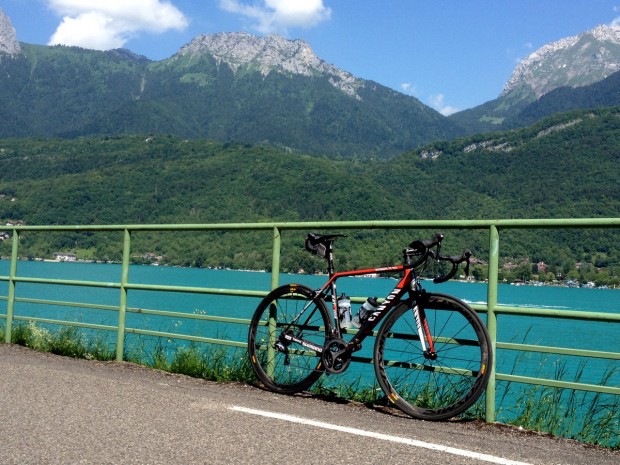
The town of Annecy sits on the lake of the same name, and mountains tower above the ice-blue water on both sides. It’s a stunning place to ride a bike but the terrain is brutal as well as beautiful.
Having registered on Saturday, and with a bib number of 4,831, I took to my start pen at 6:30am on Sunday, not nervous but like a coiled spring ready to be, well, sprung on the Alps.
This year’s Etape was, on paper, one of the easier editions in recent years but more experienced riders than me, including Etape veteran Mike Cotty, who had ridden much of the route, warned that, despite the lack of headline ascents, the accumulative climbing would take its toll by the time road turned uphill to the sharp ascent of the Semnoz.
With that in mind, I rolled over the start line at a steady pace and resisted the temptation to follow faster wheels on the flat nine kilometre run along the side of the lake before the route turned right and up into the mountains.
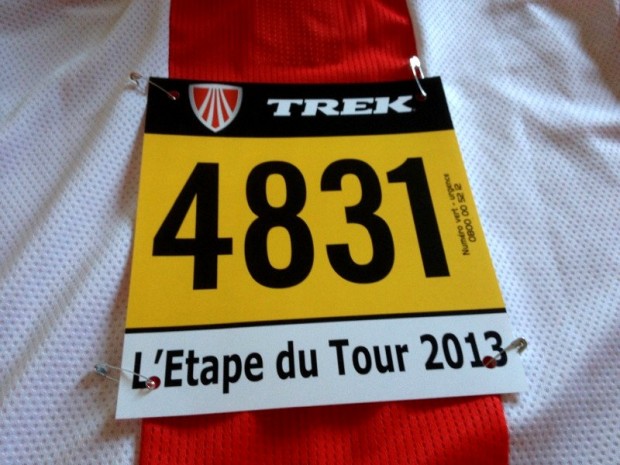
The route – taped to the Canyon’s toptube – could be split into two distinct halves, with the opening 65km taking place over a succession of category two and three ascents at a steady gradient, before the ‘proper’ climbing started. I watched my heart rate on the opening category two climb of the Cote du Puget and made a deliberate attempt to admire the view. After all, it’s a sportive, not a race.
By now it was warm, even at 8am, and with a long day ahead of me and the temperature forecast to reach 30c, I drank at regular intervals, stopping to refresh my bottles and grab a banana at the first feed stop, midway through a trio of category three climbs – the Col de Leschaux, Cote d’Aillon-le-Vieux and Col des Pres – which followed the opening ascent. This is the Alps at its best: smooth, steady climbs; lush, rolling meadows and small rustic villages, whose inhabitants lined the roads, rattling cowbells and cheering on riders with cries of ‘allez’. The true spirit of the Etape.
The long descent off the Col des Pres was fast and technical over rough roads and, having passed a number of crashes, and with a descending style which is more Andy Schleck than Thor Hushovd, I took my foot off the gas and eased back ahead of the first of the two major climbs.

The road immediately swooped from the descent of the Col des Pres into the climb of Mont Revard and a right-hand hairpin, and another water stop, marked the start of a 19km ascent which rose at an average of 5.2 per cent.
Nineteen kilometres is a long time to be riding uphill but Mont Revard’s steady gradient made it a case of settling into a rhythm, but with the sun beating down and the temperature nudging 30c, my jersey was by now fully unzipped and I was weaving from left to right across the road seeking any shade, with the relentless length of the climb beginning to take its toll.
After more than an hour of climbing, a much-needed feed station effectively marked the summit of Mont Revard and I took more time out here than at the previous stop to dive into the scrum, grab a slice of pizza and down a Coke to add some variation to my own supply of Science in Sport gels and energy bars.
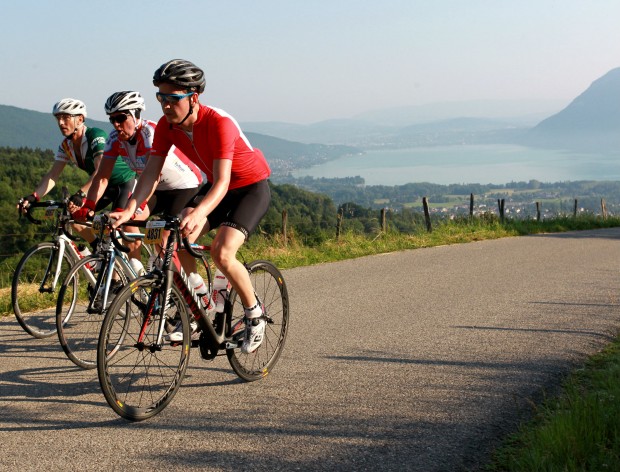
The true summit of the climb, a few of kilometres later, came with the reward of stunning views down to Aix-les-Bains, and the descent off Mont Revard was perhaps the best I’ve ridden: super-fast through thick forest and technical enough to focus the mind.
By now the ride was reaching its crescendo and, having recovered to a degree, I felt confident on the descent, although the 20km stretch between the bottom of Mont Revard and the start of the Semnoz was the over the type of rolling roads which quickly empty the legs if ridden at too fast a pace.
The final feed station came in the village of Gruffy and I stopped once more to re-fill my bottles ahead of the final climb and to grab a handful of food, although I turned down the opportunity to sample some local Savoie cheese with the likely chance of of it repeating on me throughout the grueling ascent to come.
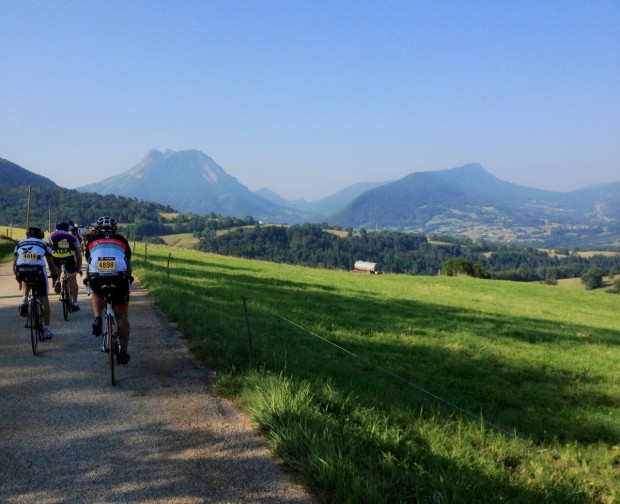
The climb of Le Semnoz officially started in the village of Quintal, where locals once again lined the road to provide a much-needed motivational boost ahead of the final ascent, but, in truth, the road had now been climbing for some three kilometres, extending its ‘official’ length from 11km to 14km.
The road did, however, tilt uphill at a far more extreme gradient through Quintal and, with well over 100km and more than 8,000 feet of climbing already in the bag, the 14 per cent felt like a sledgehammer to the legs.
I quickly clicked down into bottom gear – 34-28 – and settled in for an hour’s slog to the top. Trouble is, there is nothing in the UK which begins to replicate such an ascent. While the climb averages 8.5 per cent, that figure is deceptive as the gradient often heads into double figures, and rarely offers any respite.
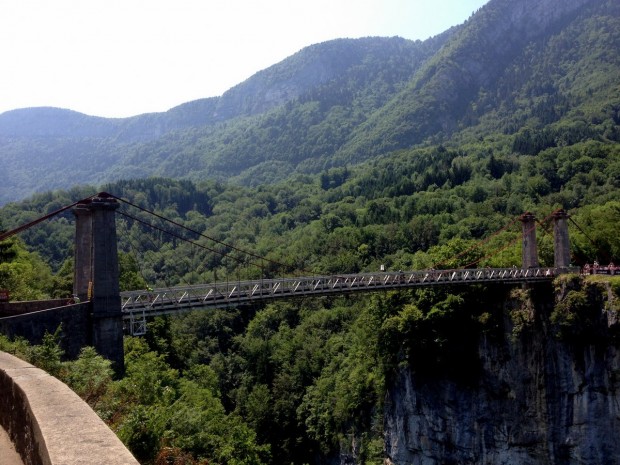
A long climb has a funny way of sapping the spirit. You can arrive at the bottom feeling ok but, once the magnitude of the ascent dawns on you, it becomes a war of attrition, fought under the heat of the early afternoon sun and with seemingly little oxygen in the air with which to fill your lungs.
It’s fair to say the climb wasn’t pretty – not for me nor anyone else winching their way up. By now many riders, who had perhaps taken on the first half of the course at too fast a pace, had dismounted and were walking up the climb. Others sat in the little shade offered by the trees, head in hands, soul searching and trying to find the energy required to re-mount and take on the rest of the climb.
A final water stop came with eight kilometres to go but, with one bottle still full, I pressed on, preferring to maintain what little rhythm I had left, rather than grabbing a bottle of water which would only have been poured over my head to cool down.
The remaining eight kilometres were the slowest and most tortuous I’ve experienced, each kilometre marker spaced seemingly further from the one which came before it. I wanted to climb off, if only for a moment’s respite, but, even at what felt like walking pace, I was passing riders and that provided some solace that I was still climbing reasonably well.
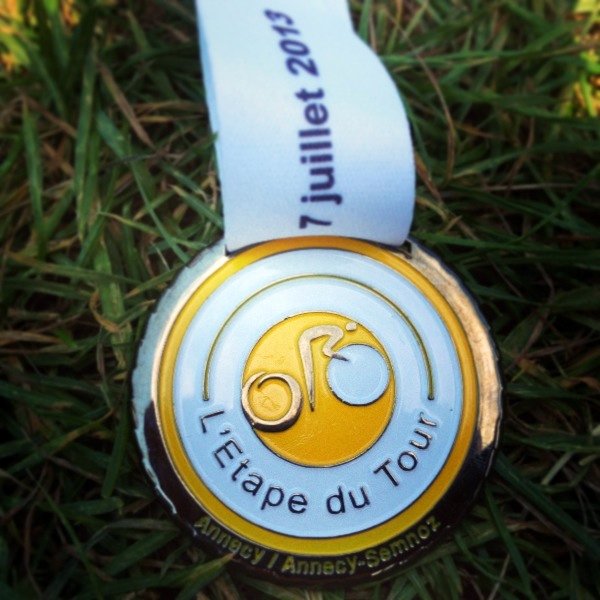
As the road emerged from the forest, the gradient again increased to double figures but now the finish line was, mentally at least, in sight, although it wasn’t until one kilometre to go that it felt real. I crossed the line, slumped over the handlebars, and felt a huge swell of emotion.
It’d taken me six-and-a-half hours, a handful of brief stops included, to ride 128km with some 11,500 feet of climbing but that time put me roughly in the top third of the 13,500 starters – but the Etape is about so much more than winning or losing.
Having caught my breath, I grabbed a sandwich and a can of fizzy drink from the Sports Tours International staff who met riders at the summit and descended back into Annecy – the ride complete and the wind in my hair – to collect my finisher’s medal.
It’s the same medal awarded to every rider who completes the Etape du Tour, as, in truth, most who take on the Etape don’t ride for a time, but to finish a stage of the Tour de France, and to experience the agony and ecstasy of life in the pro peloton, if only for a day. It’s why the event is near the top of most cyclist’s to-do lists – and now it’s been ticked off mine.
RoadCyclingUK’s George Scott rode the Etape du Tour with Sports Tours International, who offer a comprehensive range of cycling tours and holidays, as well as packages to European sportives including the Etape du Tour, La Marmotte and the Paris-Roubaix Challenge.

